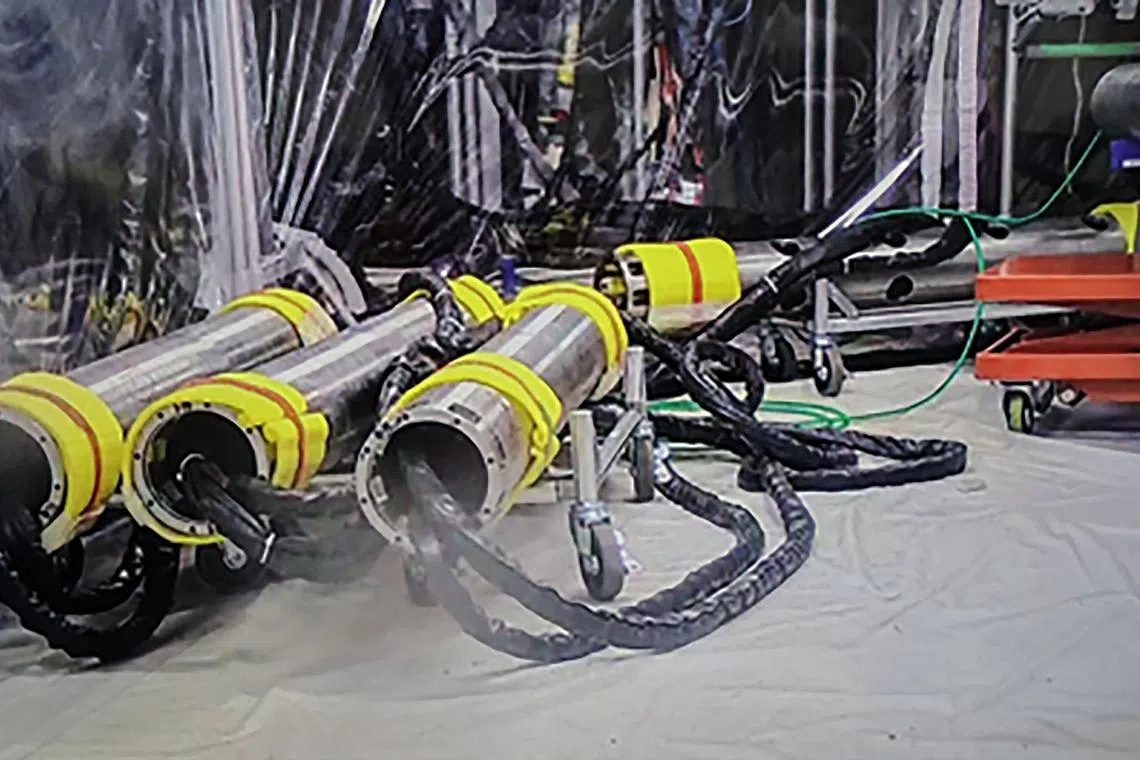Trial removal of nuclear debris from Fukushima reactor begins
Sign up now: Get insights on Asia's fast-moving developments

Pipes for the installation of a telescopic device to be used for the removal of radioactive debris at Fukushima Daiichi nuclear power plant.
PHOTO: AFP
Follow topic:
TOKYO - A difficult operation to remove a small amount of radioactive debris from Japan’s stricken Fukushima nuclear plant began on Sept 10, after technical issues suspended an earlier attempt.
Tokyo Electric Power Company (Tepco) said in a statement that its “pilot extraction operation” had started. It will take about two weeks, according to the company.
The tiny sample will be studied for clues about conditions inside the reactors – a crucial step towards decommissioning the Fukushima Daiichi plant.
Around 880 tonnes of extremely hazardous material remain 13 years after a tsunami caused by a 9-magnitude earthquake triggered one of the world’s worst nuclear accidents.
Removing the debris from the reactors is regarded as the most daunting challenge in the decades-long decommissioning project.
“The government would like to urge Tepco to respond with an even higher sense of urgency as we enter the most difficult work phase, which will be the basis for decommissioning the plant,” Chief Cabinet Secretary Yoshimasa Hayashi told reporters on Sept 10.
Tepco originally planned to start its first trial removal on Aug 22, aiming to collect just 3g for analysis – if the extraction process is successful.
But the company had to stop the work at a preliminary stage
Three of the Fukushima plant’s six reactors were operating when the tsunami hit on March 11, 2011, sending them into meltdown.
The debris within has radiation levels so high that Tepco had to develop specialised robots able to function inside.
Tepco deployed two mini-drones and a “snake-shaped robot” into one of the three nuclear reactors in February, as part of the preparations for the removal task.
Separately, in 2023 Japan began releasing treated wastewater from the Fukushima plant
Both countries have banned Japanese seafood imports, although Tokyo insists the discharge is safe, a view backed by the United Nations atomic agency.
And in a Tepco initiative to promote food from the Fukushima area, swanky London department store Harrods on Sept 7 began selling peaches that were grown in the region.
Fukushima peaches are renowned for their juicy, sweet taste – but they are not cheap, with one box of three reportedly going for £80 (S$136.55). AFP

